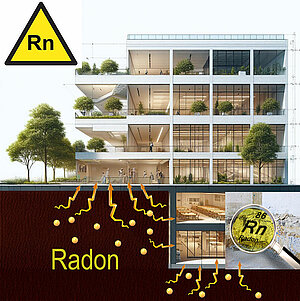Radon: An Invisible but Regulated Health Risk in Workplaces and Buildings
- milarepa Delasag
- 1 sept.
- 2 min de lecture

Radon is a radioactive gas, naturally present in the ground, resulting from the decay of uranium in rocks and soil. It is odorless, colorless, and tasteless, making it undetectable without specific measurement. Yet it is the second leading cause of lung cancer after smoking.
Where is radon found?
Radon can accumulate in:
Workplaces (especially underground or poorly ventilated areas)
Thermal spas and wellness centers
Cheese aging cellars, wineries, and food storage caves
Homes and basements, particularly in radon-prone areas
It migrates from the ground into buildings through:
Cracks in foundations
Porous building materials
Sump pumps, pipes, and drainage systems
Poorly sealed joints or flooring
Regulatory Framework
In France, radon risk management is defined by:
Code de la santé publique (Public Health Code): Radon is classified as a Class A carcinogen
Code du travail (Labour Code): Employers must assess and mitigate radon exposure in certain workplaces
Decree n°2018-434 and Order of 26 February 2019: define priority radon zones (zones 1 to 3)
At European level:
Directive 2013/59/Euratom sets basic safety standards for protection against ionising radiation, including radon.
Member States must set reference levels (France: 300 Bq/m³) and implement action plans.
Key Regulatory Bodies
ASN (Autorité de Sûreté Nucléaire) – Oversees radiological protection and enforcement in France
IRSN (Institut de Radioprotection et de Sûreté Nucléaire) – Provides research, data, and risk assessment
Ministère de la Santé – Defines public health policies
EUROATOM / European Commission – Provides overarching legal framework
Prevention and Mitigation
Radon measurement campaigns (especially in radon zone 3 areas)
Ventilation and sealing improvements in buildings
Radon barriers in new constructions
Employer duty to protect workers: Measurement and remediation required above 300 Bq/m³
Don’t ignore the invisible. Radon risk is real, measurable, and regulated.
Ensure your buildings, facilities, and workforce are protected through proper assessment, mitigation, and compliance with both French and EU standards.



Commentaires